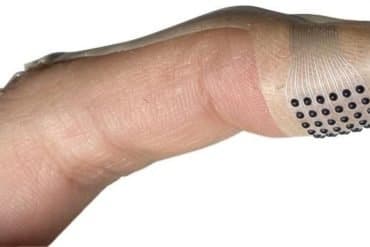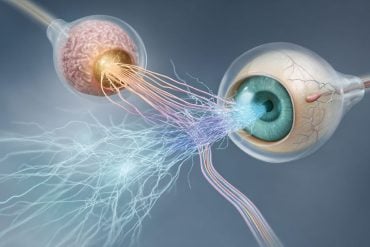Summary: Researchers studying fruit flies discovered that nerve cells sensing limb motion are turned off when the insect moves, allowing the brain to switch between stabilizing posture and enabling dynamic action. This neural circuit, mediated by interneurons, ensures flies can balance while also reacting quickly to external disturbances.
The findings suggest proprioceptive feedback is flexibly suppressed during active motion but remains active when limbs are passively moved. Understanding this balance between stability and movement may inform therapies for human motor disorders and recovery after injury.
Key Facts
- Proprioception Switch: Flies silence leg-motion sensors during walking and grooming.
- Circuit Identified: Interneurons toggle sensory feedback between posture and motion.
- Clinical Potential: Findings could guide treatments for motor disorders and rehabilitation.
Source: University of Washington
In a fruit fly, nerve cells that detect limb movement are silenced when the insect walks or grooms. This on-off switch may help the nervous system to shift between two states: one helps keep the body steady and the other readies it to move.
UW Medicine neuroscientist John Tuthill explained the difference through a human analogy: “Stabilizing reflexes enable us, for example, to stay upright on a swaying train, while the active mode supports dynamic motions like walking across uneven terrain.”
“All animals possess a sense of their body’s position and motion, known as proprioception, which is used to stabilize their body posture and guide their movements,” he said.
Tuthill is a professor of neurobiology and biophysics at the University of Washington School of Medicine. His lab studies the cells, signals and circuits that govern proprioception and motor control in flies.
Led by his former postdoctoral fellow Chris Dallmann, the research resulting in the new findings was reported Sept. 17 in Nature.
The researchers showed that proprioceptive nerve cells for sensing leg motion are deactivated during active movement. They also discovered the neural circuit that gives rise to this state-dependent switch, which the brain uses to toggle between maintaining postural reflexes and sustaining voluntary movement.
The fly’s ability to selectively suppress movement feedback, the researchers surmised, could make the insect more sensitive to sudden external events that would perturb it, and therefore quicker to respond.
Advancing basic scientific knowledge of the sensory feedback that is flexibly tuned to manage these dual tasks may lay the foundation for future clinical applications.
“Understanding how proprioception is used to control the body is important for developing treatments for sensorimotor disorders and supporting rehabilitation after injury,” Tuthill said.
While carrying out this recent study in fruit flies, Tuthill’s lab used cell-type specific calcium imaging to learn that position-detecting nerve cell projections operate across a range of behaviors.
The inhibition of movement feedback during walking and grooming occurred via a specific class of nerve cells – interneurons — that function as a liaison between sensory neurons and motor neurons.
This selective suppression took place only during active, self-directed movements by the insect, not passive movements of the insect’s limbs. The researchers traced the nerve-signaling pathways that conduct this inhibition in a leg-specific manner.
The researchers indicated that certain findings suggest the inhibition may be carried out predictively when the leg is still at rest, after the interneurons receive signals from the brain and before the onset of movement.
Dallmann is continuing his research on how neural circuits control movement as a Marie Sklodowska-Curie Fellow at the University of Wuerzburg, Germany.
About this neuroscience research news
Author: Leila Gray
Source: University of Washington
Contact: Leila Gray – University of Washington
Image: The image is credited to Neuroscience News
Original Research: Open access.
“Selective presynaptic inhibition of leg proprioception in behaving Drosophila” by John Tuthill et al. Nature
Abstract
Selective presynaptic inhibition of leg proprioception in behaving Drosophila
Controlling arms and legs requires feedback from the proprioceptive sensory neurons that detect joint position and movement.
Proprioceptive feedback must be tuned for different behavioural contexts, but the underlying circuit mechanisms remain poorly understood.
Here, using calcium imaging in behaving Drosophila, we find that the axons of position-encoding leg proprioceptors are active across a range of behaviours, whereas the axons of movement-encoding leg proprioceptors are suppressed during walking and grooming.
Using connectomics, we identify a specific class of interneurons that provide GABAergic presynaptic inhibition to the axons of movement-encoding proprioceptors.
These interneurons receive input from parallel excitatory and inhibitory descending pathways that are positioned to drive the interneurons in a context-specific and leg-specific manner.
Calcium imaging from both the interneurons and their descending inputs confirms that their activity is correlated with self-generated but not passive leg movements.
Taken together, our findings reveal a neural circuit that suppresses specific proprioceptive feedback signals during self-generated movements.







